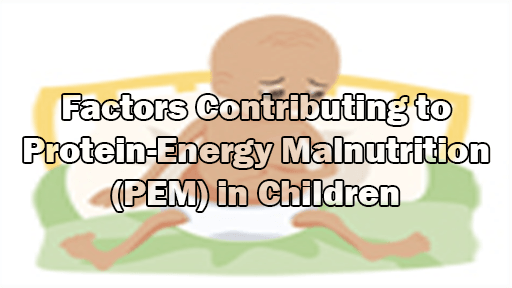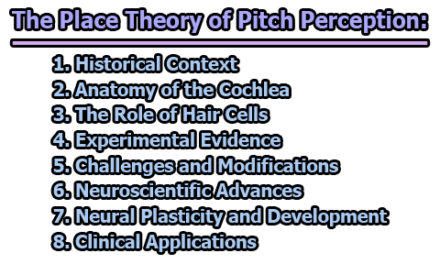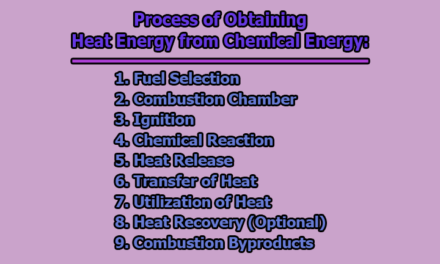Factors Contributing to Protein-Energy Malnutrition (PEM) in Children:
Protein-Energy Malnutrition (PEM) is a critical health issue affecting children globally, particularly in developing countries. It arises when a child’s diet lacks adequate protein and energy, leading to severe health consequences. Several factors contribute to the development of PEM, and understanding them is crucial for implementing effective preventive measures and interventions. Here are some of the factors contributing to Protein-Energy Malnutrition (PEM) in children:
1. Early Weaning from Breast Milk: Premature cessation of breastfeeding is a critical factor contributing to PEM. Breast milk provides essential nutrients, antibodies, and immune-boosting factors crucial for a child’s early development. When a child is weaned too soon and transitioned to a diet deficient in proteins and energy, it disrupts the delicate balance required for proper growth. This nutritional gap early in life can set the stage for long-term consequences, increasing the vulnerability to PEM.
2. Prolonged Nursing and Late Introduction of Supplementary Food: Conversely, prolonged reliance on breastfeeding without the timely introduction of complementary foods is another factor contributing to PEM. As a child grows, the nutritional content of breast milk alone may become inadequate to meet increasing energy and protein needs. Delayed introduction of solid foods can further exacerbate nutritional deficiencies, compromising the child’s overall health and contributing to the development of PEM.
3. Inadequate Supplementary Food Due to Lack of Knowledge or Resources: A lack of awareness regarding a child’s specific nutritional needs and economic constraints often leads to inadequate supplementary feeding. Some mothers may not comprehend the importance of protein-rich foods, while others, facing financial challenges, may resort to diluting cow’s milk with water or relying on less expensive, but less nutritious, food options. This lack of access to a diverse and nutrient-rich diet contributes significantly to the risk of PEM.
4. Unhygienic Conditions and Disease: Poor hygiene conditions expose children to diseases such as diarrhea, a common ailment in unsanitary environments. During illness, children are often placed on a mild diet to aid recovery. However, if this is not carefully managed, it can result in prolonged periods of inadequate nutrition, further elevating the risk of PEM.
5. Low Socioeconomic Status: Families facing economic hardships often find themselves unable to afford a nutritious and balanced diet. In such circumstances, the dietary choices become constrained, leading to a reliance on cheaper, less nutritious alternatives. The intersection of poverty and limited resources creates a breeding ground for PEM, as children in low socioeconomic status households are at a higher risk of inadequate nutrition.
Factors Contributing to Protein-Energy Malnutrition (PEM) in Children.
6. Lack of Nutritional Education: Insufficient knowledge about the nutritional requirements of children contributes significantly to PEM. Mothers and caregivers may lack awareness of the importance of a well-balanced diet rich in proteins and energy for the healthy development of their children. Educational programs aimed at disseminating information on proper nutrition are essential to empower parents and caregivers to make informed dietary choices for their children, reducing the risk of PEM.
7. Food Insecurity: Regions grappling with food insecurity face a constant challenge in providing consistent access to an adequate and balanced diet. Families in such areas may experience periodic shortages of food, leading to a reliance on less nutritious options. Chronic exposure to food insecurity can perpetuate malnutrition, including PEM, as children in these regions struggle to receive the necessary nutrients for optimal growth and development.
8. Limited Healthcare Access: Inadequate access to healthcare services is a significant barrier to addressing PEM. Regular health check-ups are crucial for the early detection and management of nutritional deficiencies. Children without access to proper healthcare may miss out on essential interventions, exacerbating the impact of PEM and hindering their overall well-being.
9. Cultural Practices: Certain cultural beliefs and practices surrounding infant and child feeding may contribute to inadequate nutrition. Cultural norms regarding breastfeeding duration, the timing of introducing complementary foods, and dietary preferences can impact a child’s nutritional intake. Tailoring interventions to address cultural considerations is crucial for the success of nutritional programs aiming to combat PEM.
10. Inadequate Government Policies: Weak or absent government policies related to nutrition can exacerbate the prevalence of PEM. Governments play a pivotal role in creating an environment that supports proper nutrition for children. Effective policies should encompass areas such as maternal and child healthcare, education on nutrition, and economic support for vulnerable populations. Strengthening and enforcing such policies are essential steps toward reducing the incidence of PEM and promoting overall child health.
Preventive Measures and Interventions:
To address and mitigate the factors contributing to Protein-Energy Malnutrition, a comprehensive approach is required:
- Promoting Breastfeeding Education:
- Awareness Campaigns: Launch comprehensive awareness campaigns targeting expectant mothers and communities to highlight the importance of exclusive breastfeeding for the initial six months of a child’s life. Utilize various media channels, community events, and healthcare facilities for dissemination.
- Healthcare Provider Training: Conduct specialized training programs for healthcare professionals to enhance their knowledge and communication skills in promoting breastfeeding. Ensure that healthcare providers can offer personalized guidance and support to mothers during prenatal and postnatal care.
- Early Introduction of Complementary Foods:
- Community Workshops: Organize community workshops and information sessions to educate parents and caregivers on the proper timing and composition of complementary foods. Emphasize culturally relevant practices and practical approaches for preparing nutritionally rich meals.
- Healthcare Outreach: Integrate nutritional counseling into routine healthcare services, ensuring that parents receive guidance on introducing complementary foods at the appropriate developmental stages of the child. Strengthen the link between healthcare providers and the community.
- Nutritional Education and Support:
- Parenting Programs: Establish educational programs that provide parents and caregivers with comprehensive knowledge about the nutritional needs of children at different developmental milestones. These programs can be delivered through community centers, schools, and healthcare facilities.
- Community Support Groups: Facilitate the creation of community support groups where parents can share experiences, exchange nutritional knowledge, and receive guidance from healthcare professionals. Encourage a supportive environment for optimal child nutrition.
- Improving Hygiene and Sanitation:
- Public Health Campaigns: Launch public health campaigns emphasizing the importance of proper hygiene practices, including handwashing, safe water storage, and sanitation. Employ a combination of media outlets, community events, and educational materials for effective outreach.
- Infrastructure Development: Advocate for and invest in improved sanitation infrastructure and access to clean water in communities. Collaborate with local authorities and organizations to address the root causes of unhygienic conditions, reducing the risk of diseases that contribute to malnutrition.
- Economic Support for Vulnerable Families:
- Social Welfare Programs: Implement targeted social welfare programs aimed at alleviating economic hardships for vulnerable families. Provide financial assistance to ensure that families have the means to access a diverse and nutritious diet for their children.
- Microfinance Initiatives: Support microfinance projects that empower caregivers, especially mothers, to generate income for their families. By enhancing economic resilience, these initiatives contribute to improved purchasing capacity for nutritious food items, reducing the likelihood of PEM.
- Strengthening Healthcare Access:
- Mobile Health Clinics: Implement mobile health clinics to reach underserved populations in remote areas. These clinics can offer regular health check-ups for children, including nutritional assessments, and provide essential interventions to address any identified deficiencies.
- Training Healthcare Workers: Equip healthcare professionals with specialized training in identifying and managing nutritional deficiencies in children. Ensure that healthcare workers are well-informed about nutritional best practices and can effectively communicate this information to parents during routine healthcare visits.
- Cultural Sensitivity in Nutritional Education:
- Tailored Educational Materials: Develop culturally sensitive educational materials that respect and incorporate local practices. These materials should provide practical nutritional advice that aligns with cultural beliefs, fostering community acceptance and adherence to nutritional guidelines.
- Community Involvement: Engage community leaders, influencers, and local healthcare providers to endorse and actively support nutritional education programs. Establishing community buy-in is crucial for the success of these initiatives, ensuring cultural relevance and sustainability.
- Food Security Initiatives:
- Agricultural Support: Implement initiatives that enhance agricultural productivity, promoting the cultivation of diverse and nutrient-rich crops. This can contribute to increased access to a variety of nutritious foods, addressing food shortages and reducing the risk of PEM.
- Food Distribution Programs: Establish targeted food distribution programs during periods of heightened vulnerability, such as droughts or economic crises. These programs can provide immediate relief, ensuring that children have access to essential nutrients even during challenging times.
- Government Policies and Legislation:
- Legislative Advocacy: Advocate for the development and enforcement of comprehensive government policies addressing child nutrition. These policies should encompass measures to support breastfeeding, regulate food marketing to children, and provide economic assistance to vulnerable families.
- Monitoring and Evaluation: Implement robust monitoring and evaluation mechanisms to assess the effectiveness of existing policies. Regularly evaluate the impact of these policies on child nutrition outcomes, identify areas for improvement, and adjust strategies accordingly.
- International Collaboration and Aid:
- Partnerships with NGOs: Foster collaborations with non-governmental organizations (NGOs) and international agencies to leverage resources and expertise. Pooling efforts on a global scale can enhance the impact of interventions and facilitate knowledge-sharing on effective strategies to combat PEM.
- Research and Innovation: Support research initiatives focused on innovative solutions for addressing PEM. Encourage the development of new technologies, interventions, and strategies that can contribute to improved child nutrition outcomes. Share research findings globally to inform evidence-based interventions and policies.
In conclusion, Protein-Energy Malnutrition is a complex issue influenced by various factors, from breastfeeding practices to economic constraints. A multifaceted approach, involving education, economic support, and improvements in hygiene, is necessary to address and prevent PEM in children. By understanding these contributing factors and implementing targeted interventions, we can work towards ensuring that every child receives the nutrition essential for healthy growth and development.

Assistant Teacher at Zinzira Pir Mohammad Pilot School and College










